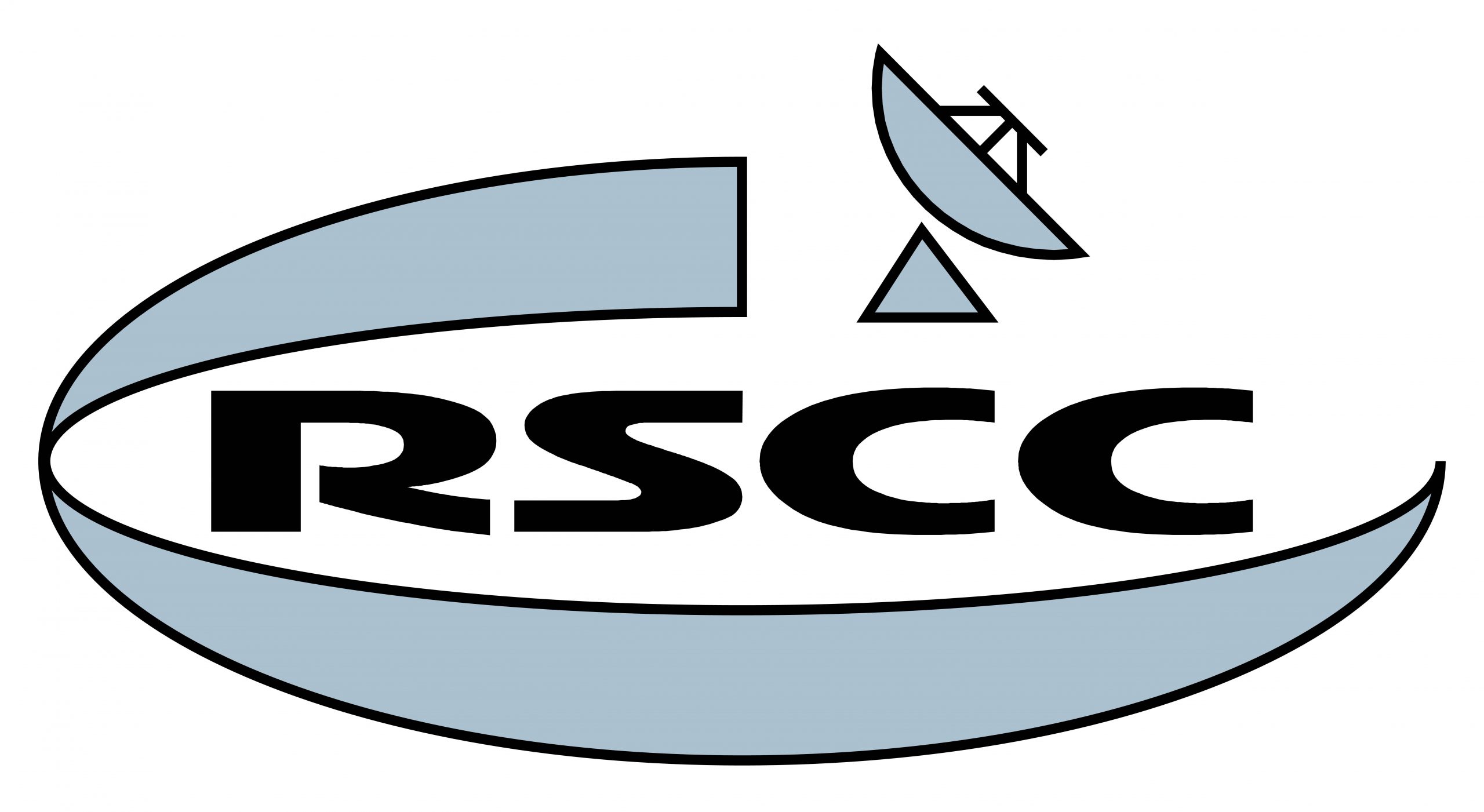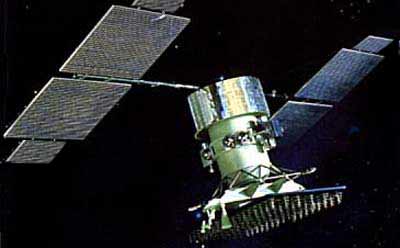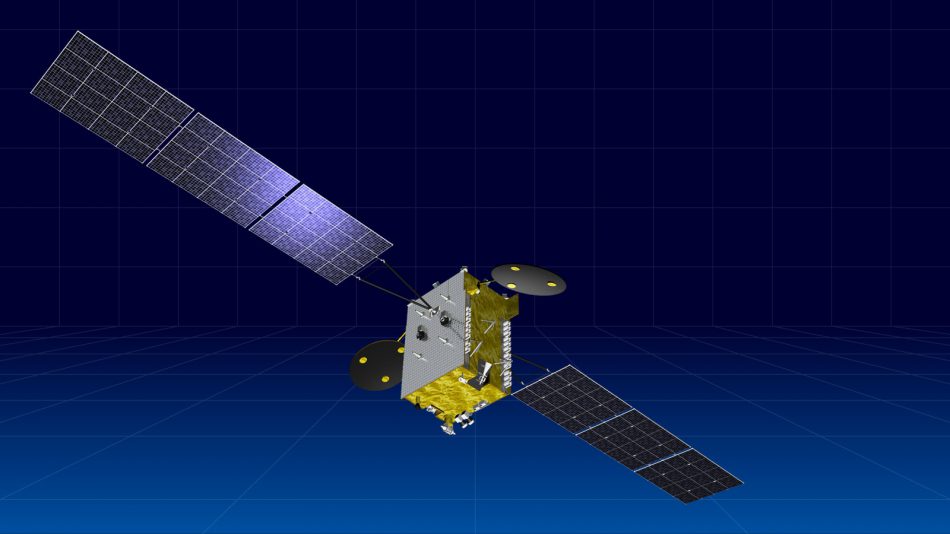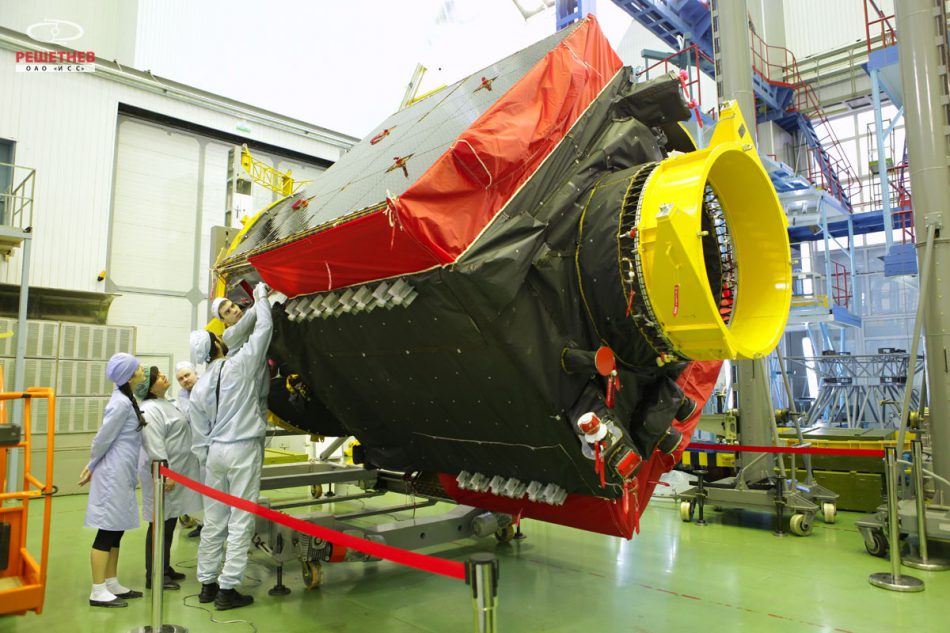
Back to selection

Supplier
RSCC
RSCC
3A, Bld. 1 Nikoloyamskiy pereulok
Moscow 109289
Russia
Russian Satellite Communications Company (RSCC) was founded in 1967 and is the main state operator of communications satellites. On April 19th, 2001, the company was granted the status of a federal unitary enterprise. RSCC is the leading Russian satellite communications company that is operating 10 satellites, the largest satellite constellation in Russia located in the geostationary orbital arc from 14° West to 140° East. The constellation covers the whole territory of Russia, the CIS, Europe, the Middle-East, Africa, the Asia Pacific region, North and South America, and Australia.
RSCC is the Russian operator for the international satellite communications systems Intelsat, Eutelsat and Intersputnik, cooperating with these organizations and handling international account settlements. The company owns teleports located in Medvezhy Ozera, Vladimir, Dubna Skolkovo, Zheleznogorsk, Khabarovsk and the Shabolovka Technical Center in Moscow, which ensure the transmission of channels to all five time zones in Russia via the space vehicles of RTRN.
As the national satellite operator RSCC meets the important state tasks on providing mobile presidential and governmental communications, federal TV & Radio signal transmission over the territory of Russia and the most countries of the world. The Company began its way in February 1968 when the USSR Ministry of Communications created “Union Hub No. 9 for Radio Broadcasting and Radio Communications”.

Express AM satellite in orbit 
Ekran-M1 satellite in orbit
RSCC pays serious attention to implementing national projects and closely interacts with the Russian state authorities in the field of informational and telecommunications and broadcast systems development. RSCC provides a full range of communications and broadcasting services using its own terrestrial engineering facilities and satellite constellation including up-to-date spacecraft of Express-AM, Express-A, Bonum-1, Ekran-M series and a part of the French W4 satellite capacity. The company’s satellites offer wide opportunities to establish TV & Radio broadcasting inclusive DTH, IPTV, MPEG-4 services, broadband Internet access, data transmission, videoconferencing, VSAT network deployment, departmental and corporative communications networks worldwide. The company has its own satellite TT&C system. At present, RSCC controls and monitors the Eutelsat, Intelsat, etc. satellites using its engineering facilities.
Company History
In the 1950 – 1960’s, the Soviet Union and the USA were the world’s recognized leaders in space exploration. Led by Sergey Korolev, the founder of practical space activities, a group of Soviet scientists designed the first artificial earth satellite which was successfully orbited on 4 October 1957. The launch of the first satellite (‘Sputnik’ in Russian) marked the beginning of humankind’s space era.
In the early 60’s commercial viability of communications and broadcasting satellites was becoming increasingly apparent, and so was their vital importance. The USSR’s Molniya series and the US Telstar satellites pioneered the explosion of satellite-supported communications world-wide. The Soviet Union was a trailblazer in using communications satellites in high-elliptical orbits and in early direct TV ventures.
The first Molniya-1 telecoms satellite was launched on 23 April 1965. Its high-elliptical orbit supported the coverage of the USSR territory and visibility from any point for eight hours. Molniya-1 was successfully used in pilot satellite TV and telephony communication sessions between Moscow and Vladivostok.
In the remarkably short period of two years (1965-67), as many as twenty ground stations were simultaneously built and commissioned in the USSR’s eastern provinces to support the Orbita (Orbit) System. The Orbita transceiver station, known as the K-40 Cabin, was also built in the same timeframe in the Shchelkovo District near Moscow within the perimeter used by the Moscow Power Engineering Institute for field tests and practice. The Orbita transceiver station was the first such facility operated by RSCC. Currently it is the location for one of the key RSCC infrastructure facilities, the Satellite Communications Center called Medvezhyi Ozera (“Bear Lakes”). The Orbita System became the world’s first circular TV and distributive satellite-supported system that made the most efficient use of satellite communications capabilities.
Selecting sites for the Orbita ground stations was given special attention. The sites had to be as close as possible to the TV broadcasting centers, and they had to be built in a manner preventing interference from tropospheric radio-relay lines that operated in the same frequency range. An important technical solution was to use relatively small-diameter (12m) parabolic antennas. At the time, Intelsat was building its stations equipped with oversized and expensive 25-32m antennas.
From 4 November 1967 transmissions of Central TV content via the Orbita System became regular. It is the 4th of November 1967, which is considered the RSCC’s birthday. In 1968, the Satellite Communications Station was set up by the order of the USSR Ministry of Communications. Later the Station became the operator of the Russian non-military telecoms and broadcasting satellite constellation, and was named Russian Satellite Communications Company. This state-owned entity subsequently became a Federal State Unitary Enterprise (“FGUP”) in status on April 19th 2001, and was given the name of FGUP Russian Satellite Communications Company (RSCC). Currently RSCC is the third oldest satellite operator in the world.
The history of RSCC is linked to the history of Russian broadcasting and communication satellites. In the USSR, preference was given to manned and scientific spacecraft, which is why performance of the early domestic geo-stationary communication satellites was substantially inferior to that of foreign ones. However, there were also unique products: in 1976 the world’s first GEO satellite for direct TV called Ekran was launched. Ekran operated in the below-1GHz band and had powerful onboard repeater (up to 300 W), providing TV services to sparsely populated territories in Siberia, Far North and parts of Far East. Ekran was assigned 714 and 754 MHz, and these frequencies supported rather simple and inexpensive receivers. Ekran was, in fact, the first DTV system in the world.
An important phase in the RSCC history was satellite-supported transmission of the 1980 Summer Olympic Games held in Moscow. To address the complicated task, the Satellite Communications Center was set up in Dubna near Moscow, currently the largest teleport in Russia and Eastern Europe. The Satellite Communications Center called Vladimir, founded in the Vladimir Region in 1971, also received an additional boost to meet the needs of the Olympic Games. RSCC ground infrastructure successfully ensured the world-wide coverage of the Olympics and live telecasts throughout the Soviet Union and other countries, including those in the Atlantic region.
In the 80’s, all activities related to development of national satellite constellation were virtually discontinued. The first new Russian communications and broadcasting satellite, Express, was commissioned 15 years after the first Gorizont was orbited.
In the early 90’s, the new economic situation prompted the defense industry to begin offering their world-class products to civilian users. This new phase in the communication and broadcasting development in Russia in the 90s was not all about using international hardware but also included the best domestic equipment.
In 1998, in the context of the Federal Space Program of Russia, RSCC signed a contract with NPO PM, a domestic spacecraft manufacturer, for design and production of new up-to-date Express-A series satellites with enhanced technical parameters. Alcatel in France manufactured the satellite payloads. In 2000, two satellites of Express-A series were successfully launched into orbit and became forerunners of the National Satellite Constellation Renovation Program.
In the 2003-2009 period RSCC’s satellite constellation was complemented by seven Express AM-series spacecraft and one Express MD1 small satellite. RSCC has also taken over control and day-to-day operational management of its satellites, which has made it possible to considerably enhance service quality and reliability. The company’s efforts to further develop state-of-the-art information and communications services and to enter new regional markets have not passed unnoticed: at the international satellite summit in Paris (September 2009) RSCC was recognized as the best regional satellite operator of the year in the world.

Express-AT1 satellite in orbit 
Express-AT2 under construction
Currently the Company provides space segment capacity to users in 35 countries and, with its orbital and frequency capacity, is a confident member of the world’s ten largest satellite operators. In 2012 the RSCC constellation includes 11 satellites that are positioned along the geostationary arc extending from 14° West to 140° East. The Company’s ground infrastructure includes five satellite communications centers in European Russia, Siberia and the Far East, as well as the very modern Shabolovka Technical Center in Moscow.
An ambitious growth strategy has been mapped out by RSCC. With a record number of seven new spacecraft being built as of late 2012, the strategy contemplates the commissioning and operation of the most up-to-date satellites and the reshaping of the Company business model from the infrastructure-based to universal. It was RSCC’s strategic goal to become a member of the five largest global players in the satellite communications market in 2020.
All trademarks, logos and images mentioned and showed on this page are property of their respective owners.
Resources
www.rscc.ru
www.wikipedia.org
www.wta.com
www.satbeams.com

Supplier
RSCC
RSCC
3A, Bld. 1 Nikoloyamskiy pereulok
Moscow 109289
Russia
Satellite fleet by RSCC
| Spacecraft | Country | |||
| Express-A2 (Ekspress-6A)GEO | - | RSCC |  | Communication |
| Express-A3 (Ekspress-3A)GEO | - | RSCC |  | Communication |
| Express-A4 (Express-A1R, Ekspress-A4)GEO | - | RSCC |  | Communication |
| Express-AM1 (Ekspress-AM1)GEO | 40° East | RSCC |  | Communication |
| Express-AM11 (Ekspress-AM11)GEO | 96.5° East | RSCC |  | Communication |
| Express-AM2 (Ekspress AM2)GEO | 80.0° East | RSCC |  | Communication |
| Express-AM22 (Ekspress-AM22, SESAT-2)GEO | 53° East | RSCC |  | Communication |
| Express-AM3 (Ekspress-AM3)GEO | 103° East | RSCC |  | Communication |
| Express-AM33 (Ekspress-AM33)GEO | 96,5° East | RSCC |  | Communication |
| Express-AM4 (Ekspress-AM4)GEO | 80° East (planned) | RSCC |  | Communication |
| Express-AM44 (Ekspress-AM44)GEO | 11° West | RSCC |  | Communication |
| Express-AM4R (Ekspress-AM4R)GEO | 80° East | RSCC |  | Communication |
| Express-AM5 (Ekspress-AM5)GEO | 140° East | RSCC |  | Communication |
| Express-AM6 (Eutelsat 53A)GEO | 53° East | Eutelsat |  | Communication |
| Express-AM7 (Ekspress-AM7)GEO | 40° East | RSCC |  | Communication |
| Express-AM8 (Ekspress-AM8)GEO | 14° West | RSCC |  | Communication |
| Express-AMU1 (Eutelsat 36C)GEO | 36˚ East | Eutelsat |  | Communication |
| Express-AMU3GEO | 96° East | RSCC |  | Communication |
| Express-AMU7GEO | 145° East | RSCC |  | Communication |
| Express-AT1 (Eutelsat 56E)GEO | 56° East | Eutelsat |  | Communication |
| Express-AT2 (Eutelsat 140E)GEO | 140° East | Eutelsat |  | Communication |
| Express-MD2 (Ekspress-MD2)GEO | 145° East (planned) | RSCC |  | Communication |